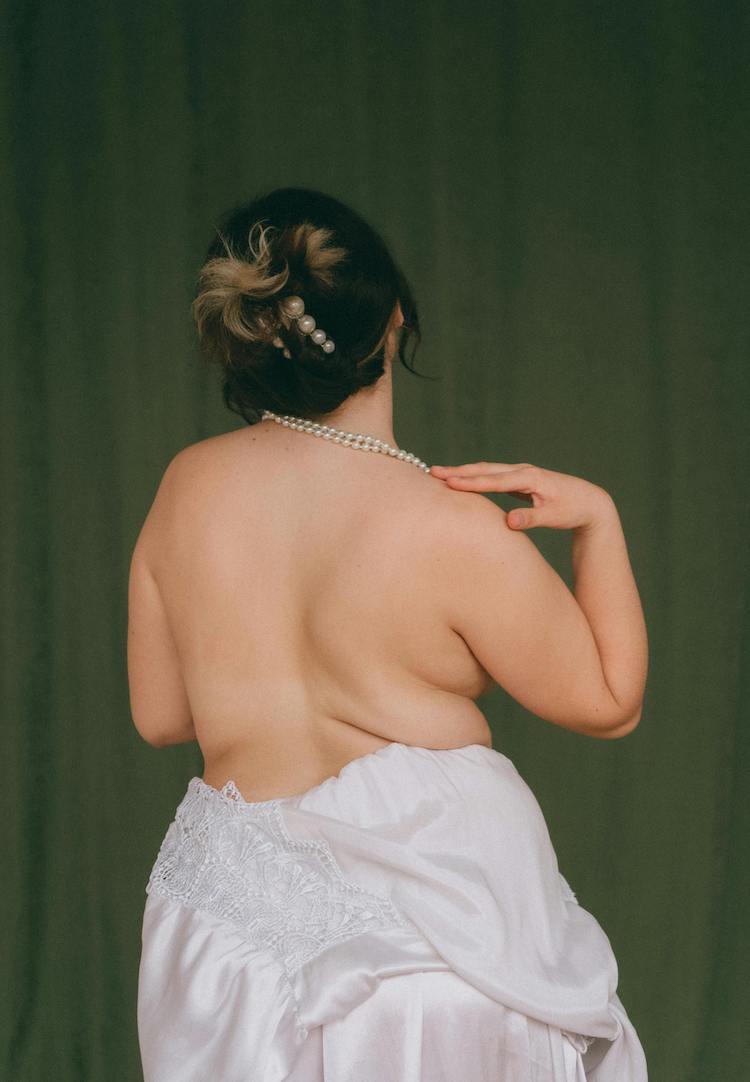National Indigenous Fashion Awards judge and model Elaine George on where she sees the future of Australian fashion
IMAGE VIA @THEELAINEGEORGE/INSTAGRAM
WORDS BY IZZY WIGHT
“It’s so exciting to see all the new First Nations brands and designers popping up around the country.”
Since kickstarting her career in 1993 as the first Indigenous model to appear on the cover of Australian Vogue, Elaine George has witnessed a seismic shift in the fashion industry. A Vogue cover was Elaine’s first-ever modelling job, and at a time when First Nations fashion creatives – the designers, stylists, photographers, models and makeup artists we now know – were seemingly non-existent. “There was no one else I could talk to,” she told writer Genevieve Gannon in March.
In the 30 years since her modelling debut, Elaine has helped to carve out space in the fashion industry for other Aboriginal and Torres Strait Islander talent. She’s a Program Ambassador for model mentorship BlakList: Next Gen, a mentor, educator, model and most recently, a judge for this year’s National Indigenous Fashion Awards (NIFA).
For more fashion news, shoots, articles and features, head to our Fashion section.
Taking place on Larrakia Country on August 7, Indigenous Fashion Project’s NIFA shortlists 36 First Nations designers, artists, art centres and creatives across seven categories. “Each year we are blown away by the incredible talent and works of both established and emerging Aboriginal and Torres Strait Islander designers and creatives. This year’s record number of nominees is a testament to the significant contribution First Nations designers are making in the fashion industry,” says Indigenous Fashion Projects manager, Michelle Maynard.
The winners will be selected by judges Yatu Widders-Hunt, Lisa Waup, Elaine George and Country Road’s Nimmi Premaratne. Here, Elaine speaks on how she got involved with NIFA, the creatives on her radar and her advice for young designers.
Who are you and what do you do?
View this post on Instagram
I am a proud Aboriginal Awakwal mother from the Bundjalung Nation (Byron Bay) in Northern New South Wales. My main role is within the child protection sector, and I have been proudly working with children and families for the past 30 years. My passion is to support Aboriginal and Torres Strait Islander families to overcome the adversities in life and I encourage representation across a variety of sectors.
Outside of this, I was the first Aboriginal fashion model to appear on the cover of Australian Vogue in September 1993 and I was approached again in 2022 to feature on the front cover for the second time with three exciting models. More recently in 2023, I was featured on an episode of ABC TV’s The Way We Wore, a three-part documentary series on Australian fashion.
I have been recently recognized as IMG Changemaker for 2024 Australian Fashion Week and I’m thrilled to be one of the NIFA judges this year, alongside Yatu Widders-Hunt and Lisa Waup.
How did you get involved with NIFA?
As an ambassador of BlakList: Next Gen, I’ve always been interested in being involved with upcoming First Nations fashion and talent. I reached out to the team at Indigenous Fashion Projects this year to see how I could be involved in this year’s events and from there, I received the offer of being one of the judges.
What do you like about Australian fashion right now? What are we doing well?
View this post on Instagram
First Nations designers and fashion is thriving in the Australian fashion industry and it’s so exciting to see all the new First Nations brands and designers popping up around the country. I am also noticing a lot of non-First Nations brands casting a lot of First Nations models, which is amazing to witness.
Where is Australian fashion lacking right now?
It’s great that Australian Fashion is opening the doors for First Nation designers and models, but I think more could be done to reach the talent in Aboriginal and Torres Strait Islander communities. With some areas so remote, it can be difficult for aspiring models to attend casting sessions, it would be great if more opportunities could be provided virtually to assist with this.
Who are some of the strongest fashion talents in the country right now? Who are you loving?
For Australian designers, [I’m loving] Lara Kovacevich (Zhivago), Jordan Gogos and Akira Isogawa. For First Nations designers, [I’m loving] Paul McCann, Clair Parker from Clair Helen, Clothing the Gaps and Kaninda Designs.
What about emerging talents, who do you have your eye on?
View this post on Instagram
I have just purchased a Kaninda [Australia] design and love it! I have had my eye on Clair Helen’s Veins collection and was so excited to receive some clothes to wear to Australian Fashion Week. My dream would be to wear Paul McCann.
As a judge, what are you looking for in this year’s awards? What are some of the criteria?
The sustainability and development of applicants are my main priorities. My criteria when looking at applications will be focused on sustainability, design innovation and community impact.
What are Australian designers doing well right now? Particularly First Nations designers?
Australian designers are doing collaborations so well right now, the spike in fashion and homeware collaborations has come a long way from my time in modelling. I love that fashion is now catering towards all types of customers.
What direction do you think the industry is heading over the next five to 10 years (or more)?
View this post on Instagram
I hope we see more First Nations designers in major shopping centres and more First Nations professionals part of runways such as hair and makeup, IT and marketing. It would also be great to see each major designer be a part of Reconciliation Australia.
What advice would you offer young designers, Indigenous or otherwise?
Don’t give up! As a strong Aboriginal woman, my ancestors didn’t die for me to be silent.
Learn more about the National Indigenous Fashion Awards here.













